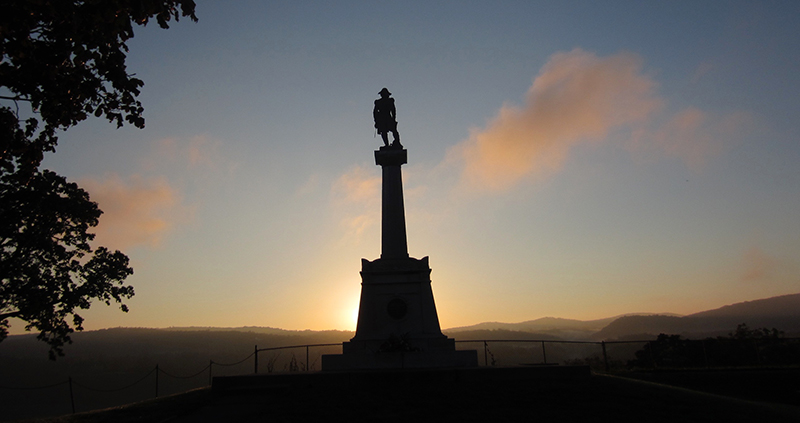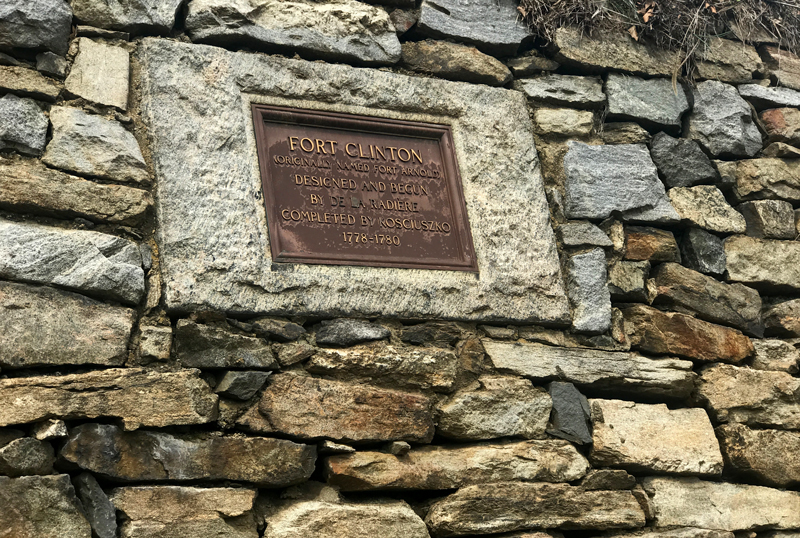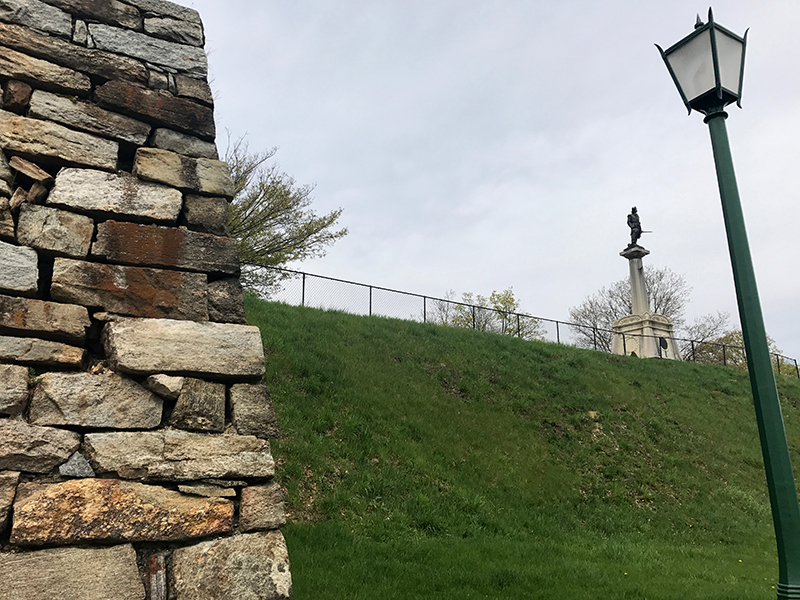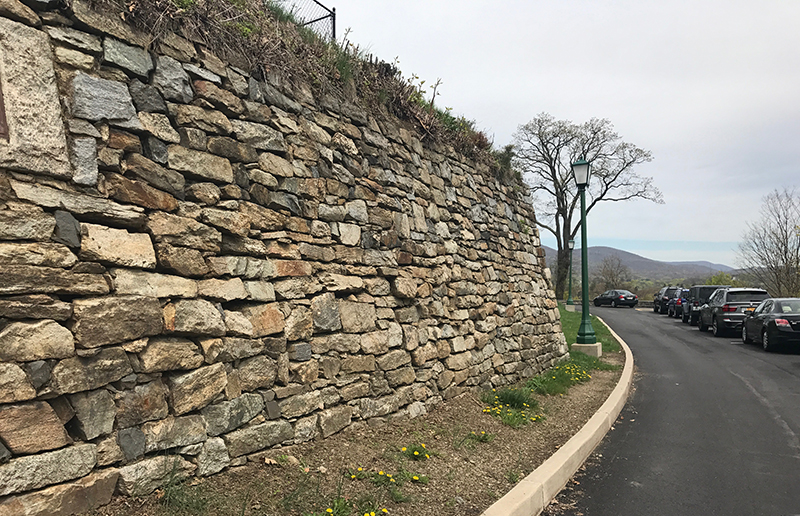Fort Arnold / Clinton
SIGNIFICANCE:

Fort Clinton – also for a time named Fort Arnold – was conceptualized by the French engineer Colonel Louis de la Radiere, the engineer in the Highlands Department from October 1777 until April 1778 before being replaced by Colonel Kosciuszko from Poland who oversaw its construction.
Fort Clinton was the major bastion on the Plain overlooking the critical bend in the river at the “west point” and the Great Chain. La Radiere had planned to build the fort of masonry which would have made it similar to forts in Europe, but Kosciuszko determined that for the sake of expediency the formidable parapets would be made of primarily earth and timber on stone foundations.
As described in the USMA Department of History document “Highland Fortress” the fort was constructed to take advantage of the natural terrain:
…the surrounding hills presented the greatest possible danger to West Point and that the first priority in the construction of the fort should go to the south and west walls and the connecting bastion. The north and east faces would be constructed on top of the steep banks that led from the river to the fort. The east face was built on ground that was slightly higher and back from the top of a cliff that rises almost 100 feet out of the water. The north face is not impossible to reach from the water’s edge, but it is extremely difficult to do so with a sufficient body of men to overcome the water batteries and the garrison and the fort. In other words, nature saved a lot of work on the sides facing the river.

Originally named for General James Clinton whose troops constructed it, the bastion on the plain was renamed for General Benedict Arnold in honor of his success at the Battle of Saratoga. After his treason at West Point it resumed the name Fort Clinton.


